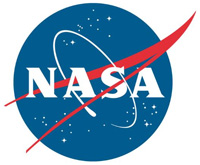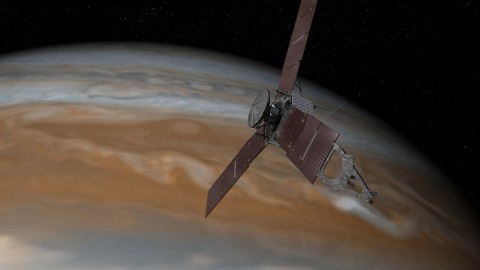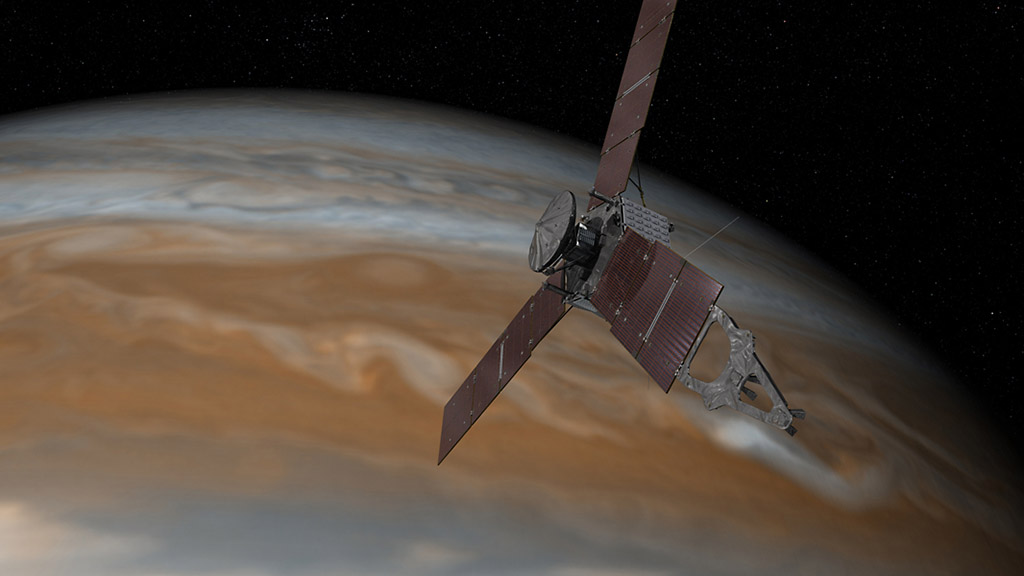Written by DC Agle
NASA’s Jet Propulsion Laboratory
 Pasadena, CA – Mission managers for NASA’s Juno mission to Jupiter have decided to postpone the upcoming burn of its main rocket motor originally scheduled for October 19th. This burn, called the period reduction maneuver (PRM), was to reduce Juno’s orbital period around Jupiter from 53.4 to 14 days.
Pasadena, CA – Mission managers for NASA’s Juno mission to Jupiter have decided to postpone the upcoming burn of its main rocket motor originally scheduled for October 19th. This burn, called the period reduction maneuver (PRM), was to reduce Juno’s orbital period around Jupiter from 53.4 to 14 days.
The decision was made in order to further study the performance of a set of valves that are part of the spacecraft’s fuel pressurization system. The period reduction maneuver was the final scheduled burn of Juno’s main engine.

After consulting with Lockheed Martin Space Systems of Denver and NASA Headquarters, Washington, the project decided to delay the PRM maneuver at least one orbit. The most efficient time to perform such a burn is when the spacecraft is at the part of its orbit which is closest to the planet. The next opportunity for the burn would be during its close flyby of Jupiter on December 11th.
Mission designers had originally planned to limit the number of science instruments on during Juno’s October 19th close flyby of Jupiter. Now, with the period reduction maneuver postponed, all of the spacecraft’s science instruments will be gathering data during the upcoming flyby.
“It is important to note that the orbital period does not affect the quality of the science that takes place during one of Juno’s close flybys of Jupiter,” said Scott Bolton, principal investigator of Juno from the Southwest Research Institute in San Antonio. “The mission is very flexible that way. The data we collected during our first flyby on August 27th was a revelation, and I fully anticipate a similar result from Juno’s October 19th flyby.”
The Juno spacecraft launched on August 5th, 2011, from Cape Canaveral, Florida, and arrived at Jupiter on July 4th, 2016.
JPL manages the Juno mission for the principal investigator, Scott Bolton, of Southwest Research Institute in San Antonio. Juno is part of NASA’s New Frontiers Program, which is managed at NASA’s Marshall Space Flight Center in Huntsville, Alabama, for NASA’s Science Mission Directorate. Lockheed Martin Space Systems, Denver, built the spacecraft. Caltech in Pasadena, California, manages JPL for NASA.
More information on the Juno mission is available at:
The public can follow the mission on Facebook and Twitter at:



